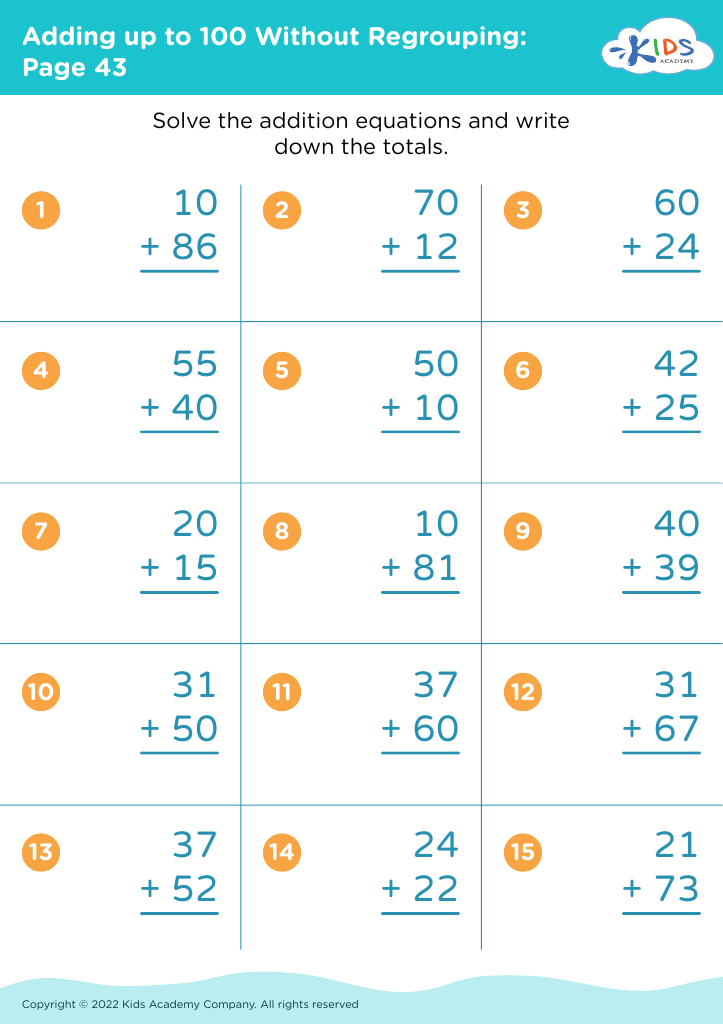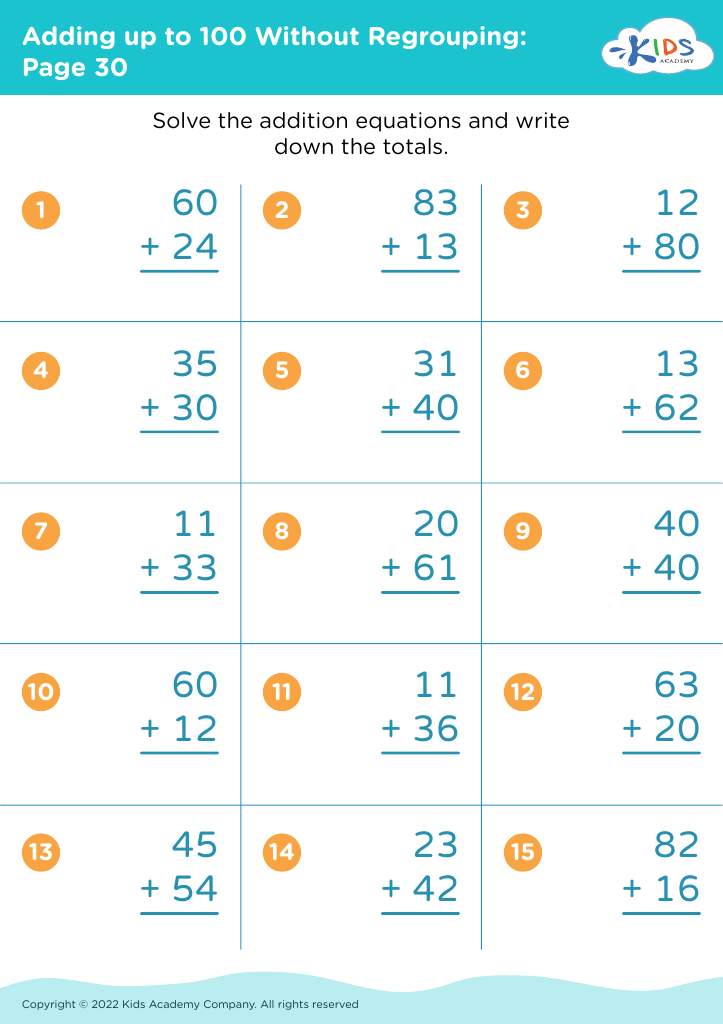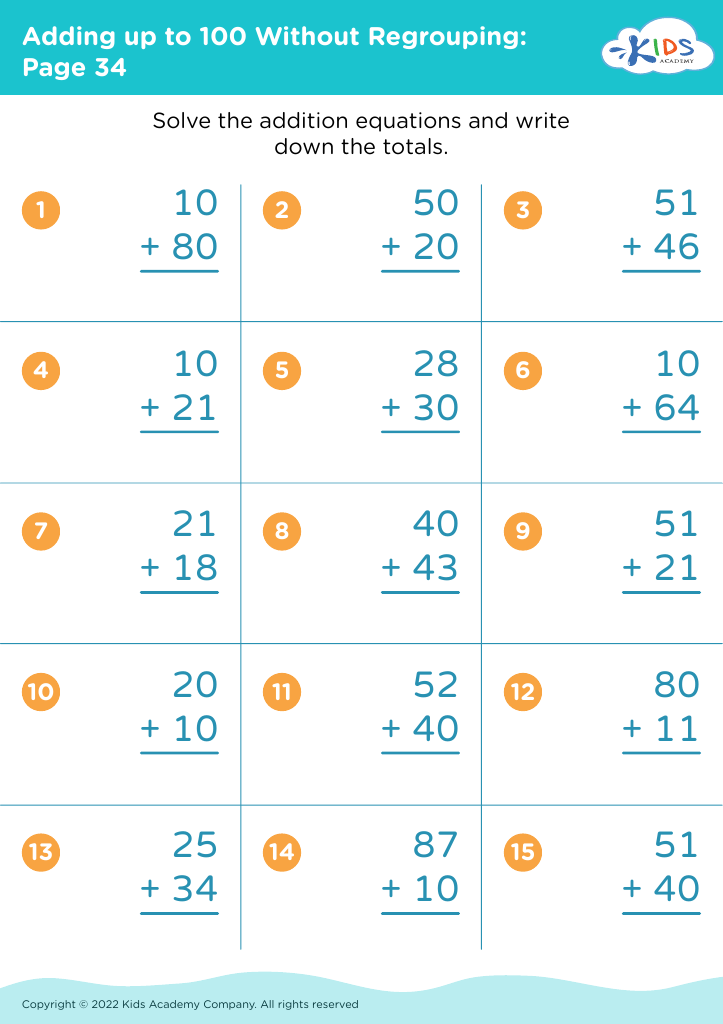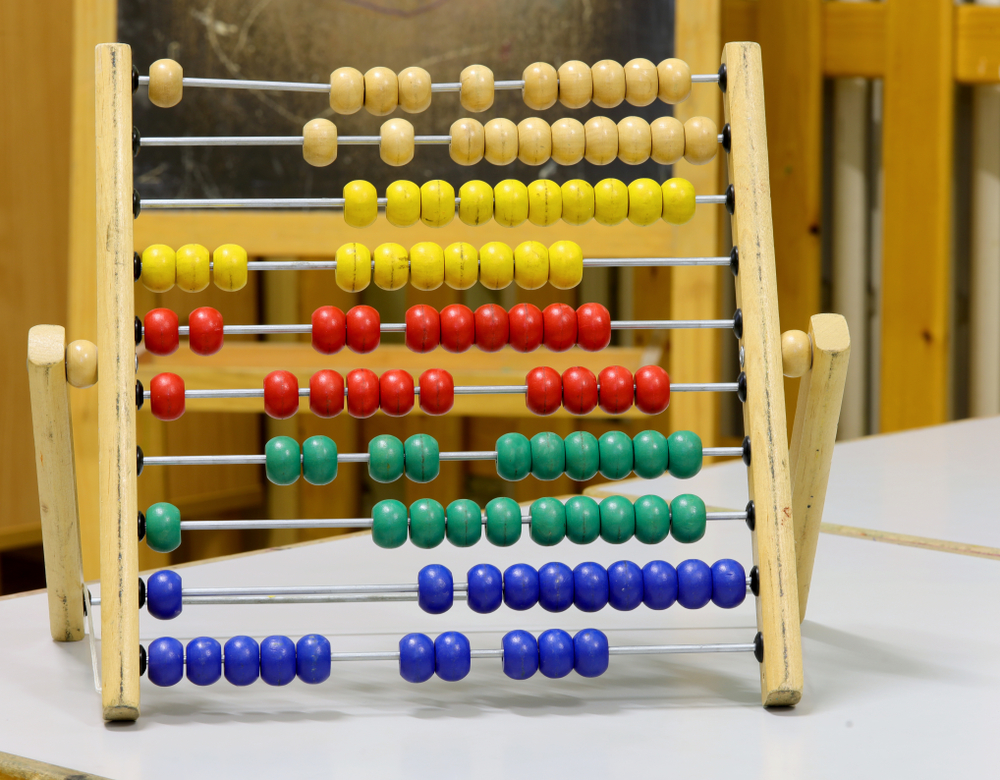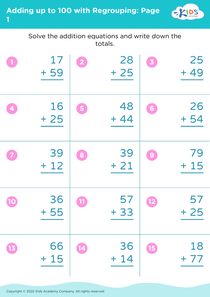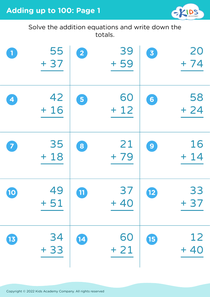Understanding patterns Adding up to 100 Without Regrouping Worksheets for Ages 5-8
3 filtered results
-
From - To
Foster your child's math skills with our "Understanding Patterns Adding up to 100 Without Regrouping Worksheets for Ages 5-8." These engaging printables help young learners grasp essential addition concepts through fun pattern exercises, enhancing their ability to identify and predict number sequences. Perfect for early grade students, each worksheet aligns with curriculum standards, ensuring your child builds a solid math foundation while enjoying interactive challenges. Encourage confidence and proficiency in addition as they explore and solve problems using patterns, all designed specifically for children aged 5-8. Boost their learning with these expertly crafted educational resources today!
Understanding patterns in addition is crucial for young children aged 5-8 as it lays the groundwork for more advanced math skills. Patterns help children recognize relationships between numbers, which fosters deeper comprehension rather than mere memorization. When adding numbers up to 100 without regrouping, kids build a solid foundation in basic arithmetic which, importantly, sets the stage for mastering addition with regrouping and more complex operations.
For parents and teachers, cultivating an understanding of these concepts is vital. It promotes logical thinking and problem-solving abilities, both of which are essential for academic success across subjects. Knowing how different numbers combine to reach 100 without regrouping can also build a child’s confidence in their math skills, making future learning experiences more positive.
Moreover, recognizing addition patterns enhances automaticity, the ability to retrieve math facts quickly and accurately without conscious effort. This capability reduces cognitive load during more complex problem-solving tasks, allowing the child to focus on new challenges rather than basic calculations.
Lastly, this foundational knowledge supports the development of number sense—an intuitive understanding of numbers and their relationships. A strong number sense is linked to better outcomes in mathematics, making it imperative for educators and parents to nurture these early skills effectively.
